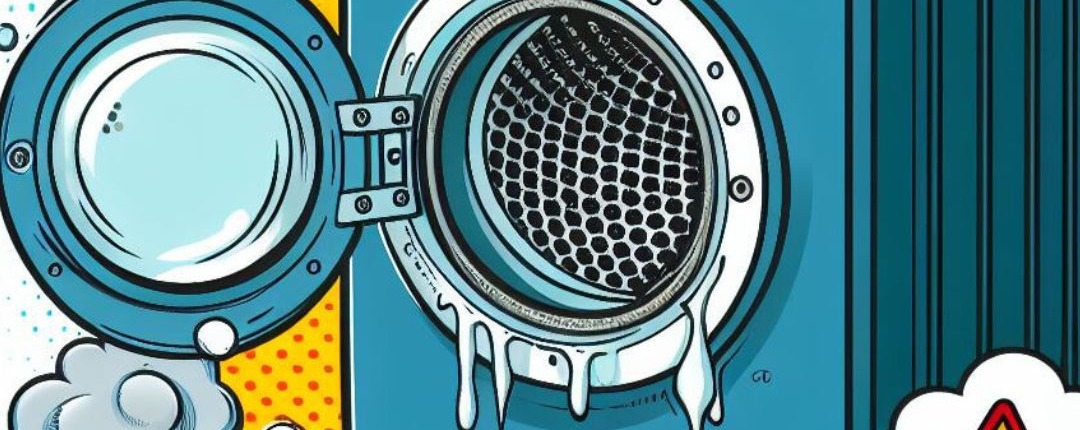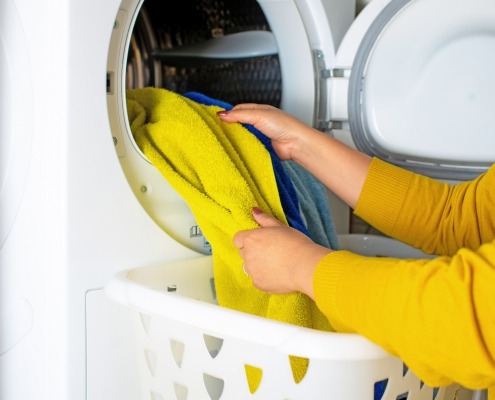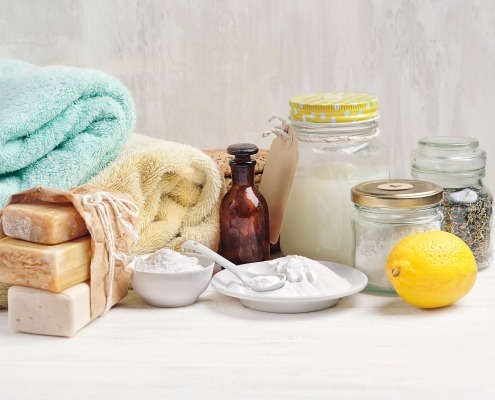How to fix dryer condensation: A troubleshooting guide
Samantha Bullington / Friday January 5, 2024
Have you opened your clothes dryer at the end of a drying cycle only to find that the inside of the drum is damp? Or maybe your laundry comes out soggy even after a full drying session?
Excessive condensation is a common problem that you can resolve yourself with a little DIY guidance.
If you need any replacement parts for your dryer, you can enter your model number at AppliancePartsPros.com to order them. Most orders arrive in just two business days, and we have thousands of free videos to show you how to install your new parts.
Disclaimer: The troubleshooting information provided in this article is based on general service manuals and may not apply to your specific appliance model. While we strive to offer helpful advice for DIY appliance repairs, variations in models and configurations can lead to differences in troubleshooting steps, error codes and part replacements. For the most accurate guidance, we strongly recommend consulting the technical sheet for your specific appliance model.
WATCH: What causes long drying times in a dryer?
What causes dryer condensation?
Before we dig into resolving your dryer’s condensation problem, let’s unpack some of the possible issues that may contribute to condensation buildup:
Improper ventilation
The most common source of dryer moisture is inadequate ventilation. Dryers work by heating the interior drum and then venting out hot, moist exhaust air. Clogged, blocked or torn ductwork, lint buildup, or blocked exterior vents can all hinder airflow and cause moisture to condense on the inside surfaces.
The wrong size and duct material can cause issues, too. The duct should be four inches in diameter with minimal 90-degree turns. It should also be a limited length, which you can find in the installation instructions from your dryer’s manufacturer. The duct should be a rigid pipe without any vinyl or aluminum foil venting.
READ MORE: How to prevent appliance fire hazards
Overloaded drum
If you cram too much laundry into the dryer, it can restrict airflow and cause excessive condensation.
With less space for the hot air to circulate freely around the wet clothes, drying performance drops. That abundant moisture has nowhere to go, so it condenses on the inside of the drum instead.
Steam cycle use
Many modern dryers offer steam cycle options that are intended to relax wrinkles and refresh clothing. By design, steam cycles inject moisture into the drum, so some residual condensation after a steam cycle is perfectly normal.
Low ambient temperature
If the room temperature around your dryer drops significantly, your dryer may have a harder time evaporating moisture from your laundry. Cooler ambient temperatures make condensation buildup inside the drum more likely.
How to fix dryer condensation
1. Check and adjust the room temperature as needed
Make sure the room temperature falls between 65-75° Fahrenheit (18° – 24° Celsius).
READ MORE: How to Childproof Appliances
2. Clean the lint filter
You should clean the lint filter after each cycle. Failing to do so can cause longer drying times and increase the risk of a fire.
If you have a full lint trap or lint is stuck on the filter, try using a brush to dislodge it. You can also rinse and scrub the filter in the sink – just remember to let it dry out completely before reinstalling it.
3. Check and clean the ducting
- Disconnect the vent and ductwork from the dryer housing and use a vacuum attachment to extract lint.
- Look over the entire length of the ductwork. Make sure it doesn’t have any sharp bends or kinks.
- Check that the vent ductwork doesn’t exceed the maximum length for your dryer model.
- Consider replacing plastic, vinyl or flexible duct or vent tubes with rigid, smooth metal ones to maximize airflow and stay cleaner for longer. Straight, short, and smooth ductwork carries moisture and debris out the best.
- Carefully reassemble the dryer when finished cleaning the interior vent pathway.
Remember: Never use your dryer without the vent system fully reattached! Failing to reconnect ductwork before running it can make a mess, increase the chance of a fire from accumulated lint and may allow potentially hazardous exhaust gases to enter your home.
READ MORE: How to Clean a Dryer Vent
4. Check and clean the vent
- Run a test cycle and make sure the external vent damper or flap is opening correctly while the dryer is working.
- Blockages in the outside vent can prevent moist air from exiting. Use a brush and a vacuum to dislodge any built-up lint in the outdoor vent.
- Consider increasing the size of your external vent flap or hood. Be sure to match the replacement to your dryer’s ducting so it stays on.
- Make sure all parts of the vent system are positioned correctly to move moist air through.
READ MORE: Clothes Dryer Maintenance
5. Use the steam cycle correctly
If you regularly use the steam cycle and mainly notice moisture only afterward, the condensation is likely normal rather than a defect.
Allow time for all moisture from a steam cycle to fully evaporate before you run the next load of laundry through the dryer.
READ MORE: 9 Ways to Improve Your Dryer’s Performance
More information
Thanks for reading! We hope this guide helped you fix excessive condensation in your dryer.
If you have any other appliance repair needs or projects, you can find more resources including our DIY blog at AppliancePartsPros.com. There, you can enter your model number to order the exact parts you need. Most orders arrive in two business days.
You can also reach our award-winning customer service team at 1-877-477-7278, chat with a pro on our website and watch thousands of free video tutorials on our YouTube channel.
Hey there, I’m Samantha and I’m super excited to be a part of the Appliance Parts Pros team! With 9 years of experience, I’ve had the awesome opportunity to assist countless customers in troubleshooting their home appliances and finding DIY repair solutions.





